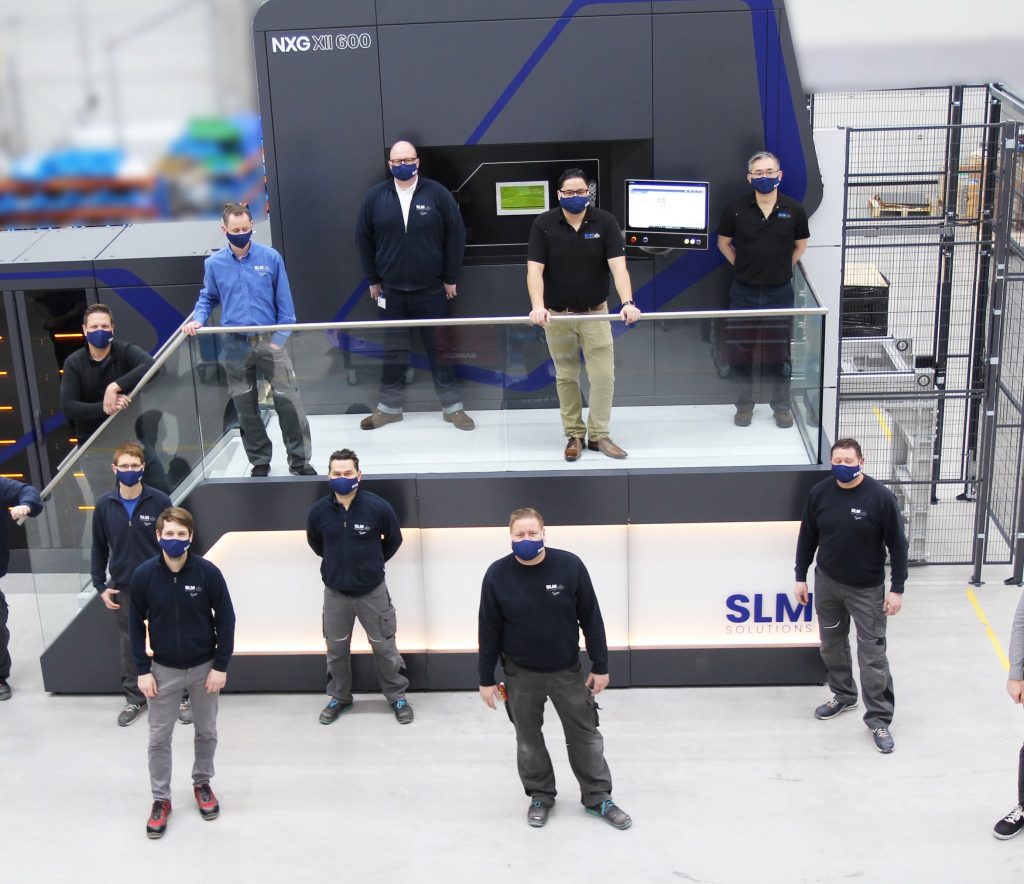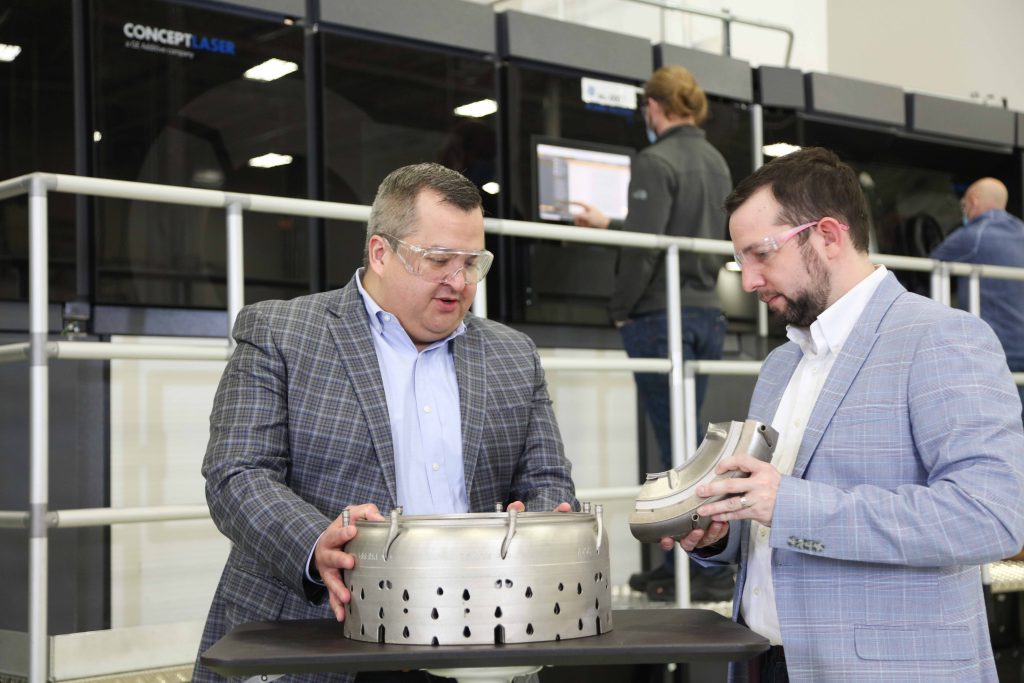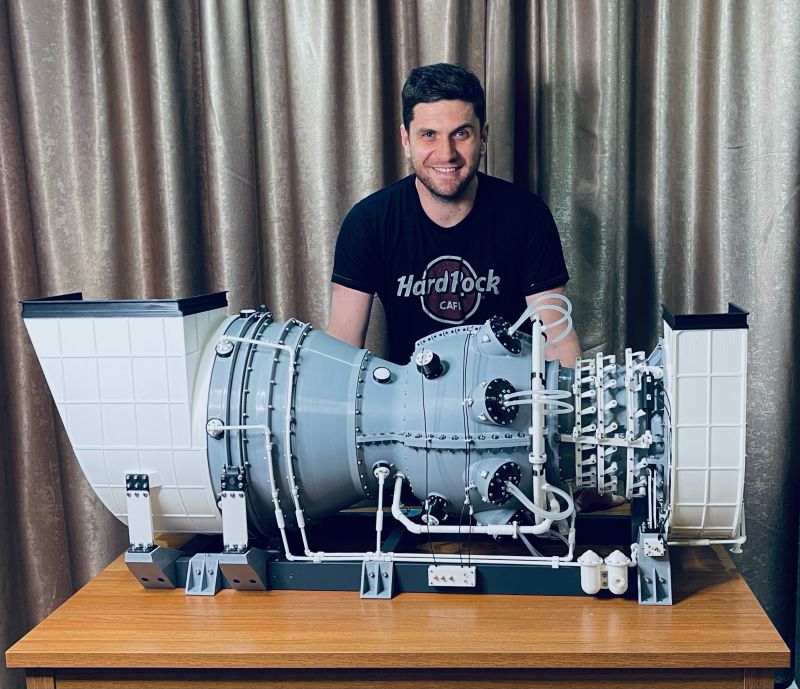3D Printing Industry is currently seeking feedback on material usage across the sector. Have your say in the Spotlight on Resin 3D Printing Survey now.
In this edition of Sliced, the 3D Printing Industry news digest, we cover the latest business developments, partnerships, and acquisitions in the additive manufacturing sector.
Today’s edition features news of research into a novel DED technology, an 80-system print farm expansion, various emerging energy and aerospace applications, and a colossal fully-3D printed gas turbine engine.
Read on for the most recent updates from GE Aviation, NMIS, Airbus, Safran, Anycubic, Raise3D, Polymaker and more.

3D printer sales from Prusa, GE Additive & SLM Solutions
Kicking off this week’s update with the latest in system sales, Volkswagen subsidiary MAN Energy Solutions has announced the installation of SLM Solutions’ NXG XII 600 3D printer. Having previously used the SLM 280, the firm now intends to deploy its more powerful twelve-laser unit, to address growing demand for larger-format and serial part production from its marine, energy and industrial clientele.
According to SLM Solutions, the NXG XII 600 is particularly well-suited to deployment in the energy industry, as it’s capable of producing components that meet the stringent mechanical property requirements of various intensive applications, thus it considers its latest order to be “indicative of the significant value proposition” the machine offers in this area.
“Yet again, we are delighted and proud to gain the trust of MAN Energy Solutions,” Jonas Mersch, Product Manager at SLM Solutions, said of the installation. “With the NXG Xll 600, MAN ES can provide innovative solutions for their customers and the industry, meet emerging market needs and test new parts. We are thrilled to watch it meet and exceed these demands head-on.”

Elsewhere, in a transaction between two GE subsidiaries, GE Aviation has acquired five new GE Additive Concept Laser M Line 3D printers. As part of the deal, four of the machines will be installed at GE Aviation’s Additive Technology Center (ATC) in Ohio during 2022, with a fifth set to be fitted at Avio Aero’s Turin site, where it will be used to support the production of GE’s Catalyst turboprop engine.
The move follows three years of collaboration between the GE divisions, in which they’re said to have delivered over 300 design improvements for the machine, as well as honing several safety and software features. More recently, both have contributed their expertise to aerospace material development at the ATC, an area that its two new M Line systems are soon also expected to be deployed in.
“The time and work we have collectively invested with our GE Additive colleagues to define, shape and then iron out the specification and functionality of the M Line means we now have a scalable solution that can build large components in a high-volume production environment, while meeting our cost entitlement goals,” explained Chris Philp, Site Leader at the ATC.
“With the M Line, we get the full capability we need to develop intricate additive geometries on large structural components.”
Swedish design studio Lostboyslab also announced the expansion of its 3D printing capabilities recently with its acquisition of 80 new extrusion systems from Prusa Research. The machines, including the Prusa i3 MK3S+ and upcoming Original Prusa XL, will be used to bolster the existing fleet of 140 machines at the firm’s Alpha Zero print farm, and allow it to keep up with rising demand for its services.
“The FDM 3D printers from Prusa research have just been proven over and over again that they are the most reliable machines,” Stefan Larsson, Founder and CEO of Lostboyslab told 3DPMN. “With their open material system, they’re very suitable for additive manufacturing with all the recycled and sustainable materials we develop together with our partners.”

NMIS launches sustainable manufacturing project
National Manufacturing Institute Scotland (NMIS) has launched a new initiative through which it aims to develop a faster, lower-cost hybrid DED process. Specifically, working alongside sixteen partner organizations, NMIS says that it plans to come up with a “future-proof” production method that combines the cost, lead time and customization benefits of forging, forming and 3D printing.
One particular area that the project is set to focus on is aerospace landing gear, the likes of which is normally created via forging and machining. Working with firms such as Airbus and Safran Landing Systems, however, the program’s researchers believe it could be possible to develop a means of 3D printing directly onto forged surfaces, in a way that makes them more material and cost-efficient to produce.
Led by NMIS, but conducted at the University of Strathclyde and Cranfield University, the first two phases of the project are already underway, with a demonstrator planned for later this year. The initiative’s third phase, on the other hand, will focus on machining at Queen’s University Belfast’s NITC, while its final stage is set to see the efficacy of traditional and alternative manufacturing methods compared.
“The use of AM coupled with forging and Parallel Kinematic Machines technologies takes a transformative approach to this process, offering the potential to reduce lead time, production costs and material waste while supporting the drive towards net zero targets, and creating a production model that genuinely contributes to a circular economy,” explains Dr Misael Pimentel, a Manufacturing Engineer at NMIS.

Designer 3D prints entire gas turbine engine
Lastly in this week’s edition of Sliced, Ivan Korzhan, an engineer at Chinese gas turbine manufacturer Longjiang Turbine, has unveiled a fully-3D printed aerospace engine. Printed from Polymaker PLA using a combination of Anycubic and Raise3D systems, the model’s design is influenced by the gas turbines built by GE, Siemens and Rolls-Royce.
Composed of 2,000 individual parts, and weighing in at around 18kg, Korzhan’s impressive feat of endurance took him 5-6 months to construct, from his initial idea through to the final build. While the talented design engineer’s model was never designed to fly, he says that it will now hold pride of place in his office, where it will act as a showcase of desktop 3D printing’s potential.
Korzhan has now posted a YouTube video breaking down how he assembled his engine model, which can be viewed below or accessed here.
To stay up to date with the latest 3D printing news, don’t forget to subscribe to the 3D Printing Industry newsletter or follow us on Twitter or liking our page on Facebook.
For a deeper-dive into additive manufacturing, you can now subscribe to our Youtube channel, featuring discussion, de-briefs and shots of 3D printing in-action.
Are you looking for a job in the additive manufacturing industry? Visit 3D Printing Jobs for a selection of roles in the industry.
Featured image shows the Sliced logo on top of a photo of engineer Ivan Korzhan and his 3D printed gas turbine engine model. Photo via Ivan Korzhan.


